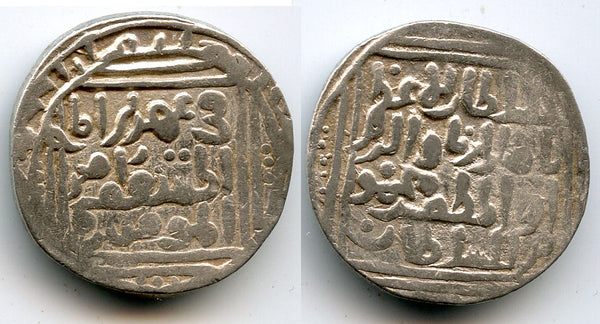
Scarcer tanka of Nasir al-Din Mahmud (1246-1266), Sultanate of Delhi, India (D-138) - 3 and 5 dots in margin segments
Arabic inscriptions on both sides: Al-sultan al-azzam Nasir al-dunya wal din abul muzaffar Mahmud ibn sultan / Arabic inscriptions, citing Caliph al-Mustansir, date and mint name in the margins. Mint of Delhi. 28mm, 10.96 grams. "The Coin sof the Indian Sultanates" D-138, Rajgor 918.
Mahmud Shah (reigned 1246–1266 CE) was a nominal Sultan of Delhi from the Mamluk (Slave) dynasty, also known as Nasir-ud-Din Mahmud. He ascended the throne as a young ruler but held little actual power, as the real authority was wielded by his powerful regent and father-in-law, Ghiyas ud-Din Balban, who served as naib (deputy) throughout most of his reign. Mahmud Shah was known for his piety, religious devotion, and interest in scholarship, rather than military or administrative affairs. His reign was relatively peaceful but marked by growing internal consolidation, largely due to Balban's strong control over the court and administration. After Mahmud Shah's death in 1266, Balban succeeded him and formally became Sultan, continuing the centralization of power that had begun during Mahmud’s nominal rule.
